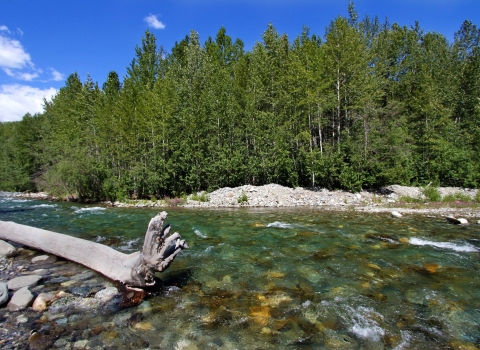The U.S. Fish and Wildlife Service is seeking public comments on a draft recovery plan for the Arkansas River shiner (Notropis girardi), an imperiled minnow native to the Arkansas River basin found in Oklahoma, Texas, and New Mexico. The 60-day comment period ends on Oct. 30th, 2023.
The Arkansas River shiner is a two-inch, streamlined minnow, with a relatively small eye and flattened head. The species was once widespread and common in Southern Great Plains rivers of Kansas, New Mexico, Oklahoma, Arkansas, and Texas, but its distribution has declined over 80 percent and is now restricted to the South Canadian River in eastern New Mexico, the Texas panhandle, and Oklahoma. It is considered a pelagic broadcast spawner, meaning its semi-buoyant eggs are released into the water column and require moving water for their development. Historically, these fish likely utilized slow moving floodplains (during higher flows) for egg and larval development but given changes to Great Plains rivers and a loss of connectivity to those flood plains, these eggs must float downstream to develop. Arkansas River shiner eggs and larvae need at least 135 uninterrupted stream miles to hatch and develop before they are strong enough to leave the main channel. Altered hydrology, stream fragmentation, and impoundments can interrupt these long stream stretches needed for development, and impede the return trip, an 18-month journey some must make for successful upstream repopulation.
The Arkansas River shiner was listed as threatened under the Endangered Species Act in 1998, and is imperiled by a variety of causes, including altered flow regimes, impoundments and other stream fragmentation, modified topography, decreased water quality, and the spread of invasive plant and aquatic species. Since the 1998 listing, the Service has worked with partners to monitor Arkansas River shiner populations. Comments on this draft recovery plan will serve to better inform the Service’s development of a Recovery Implementation Strategy (RIS), which will contain more specific, on-the-ground activities and tasks to achieve recovery of the species.
While they are not regulatory, recovery plans provide a framework for the recovery of a species. Recovery Plans outline the actions necessary to recover a species, and the criteria that ESA protection is no longer necessary. The draft recovery plan describes actions that are considered necessary for recovery of the species, establishes delisting criteria and estimates the time and cost to implement recovery actions for the species.
Specific recovery goals include stopping the current decline in existing populations and their associated habitats, improving habitat in one or more historically occupied river segments, and establishing at least one self-sustaining population outside of the South Canadian River.
The Service encourages the public, federal and state agencies, tribes, and other stakeholders to review the draft recovery plan and provide comments during the 60-day public comment period, ending on Oct. 30th, 2023. To review the plan and find out how to submit a public comment, visit the species profile page.
